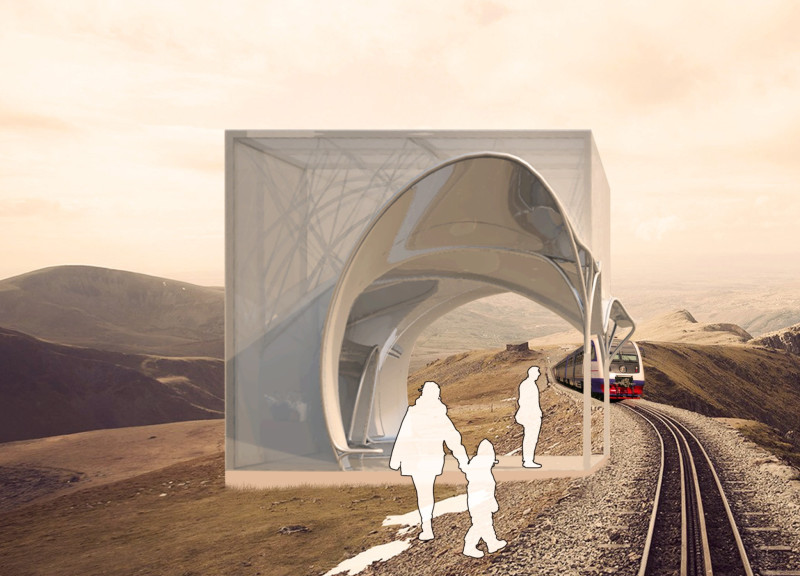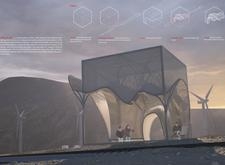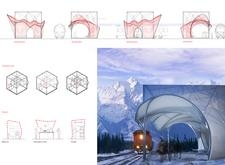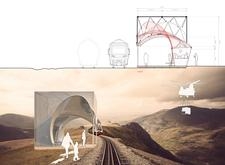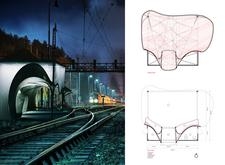5 key facts about this project
### Architectural Design Report: "Within The Box"
#### Overview
The project "Within The Box" is situated in the mountainous region of Siberia, drawing inspiration from the historical context of the Siberian railway. It aims to integrate the legacy of traditional rail infrastructure with contemporary design principles. The goal is to reimagine the conventional train station as an interactive community space that serves both functional and social needs, reflecting the duality of heritage and innovation inherent in high-speed rail transport.
#### Spatial Configuration and User Experience
The design emphasizes a unique spatial organization that accommodates multiple functions, including restrooms, an information center, and storage. These areas are configured to enhance user comfort and promote efficient movement, while interstitial spaces between functional zones serve as informal gathering spots. The building's layout is intended to create a welcoming environment that fosters social interaction and engagement, essential for a bustling transport hub.
#### Material Selection and Environmental Integration
Incorporating modern materials such as glass, steel, and polycarbonate, the structure enhances transparency and lightness while maintaining durability and energy efficiency. Glass facades invite the surrounding landscape into the interior, creating a connection between users and the environment. The steel framework ensures structural stability with a slender profile, contributing to a refined aesthetic. Polycarbonate elements help to manage thermal performance. The building's strategic positioning and landscaping further highlight its commitment to sustainability and responsiveness to its natural context, symbolized by the integration of wind turbines within the landscape.


